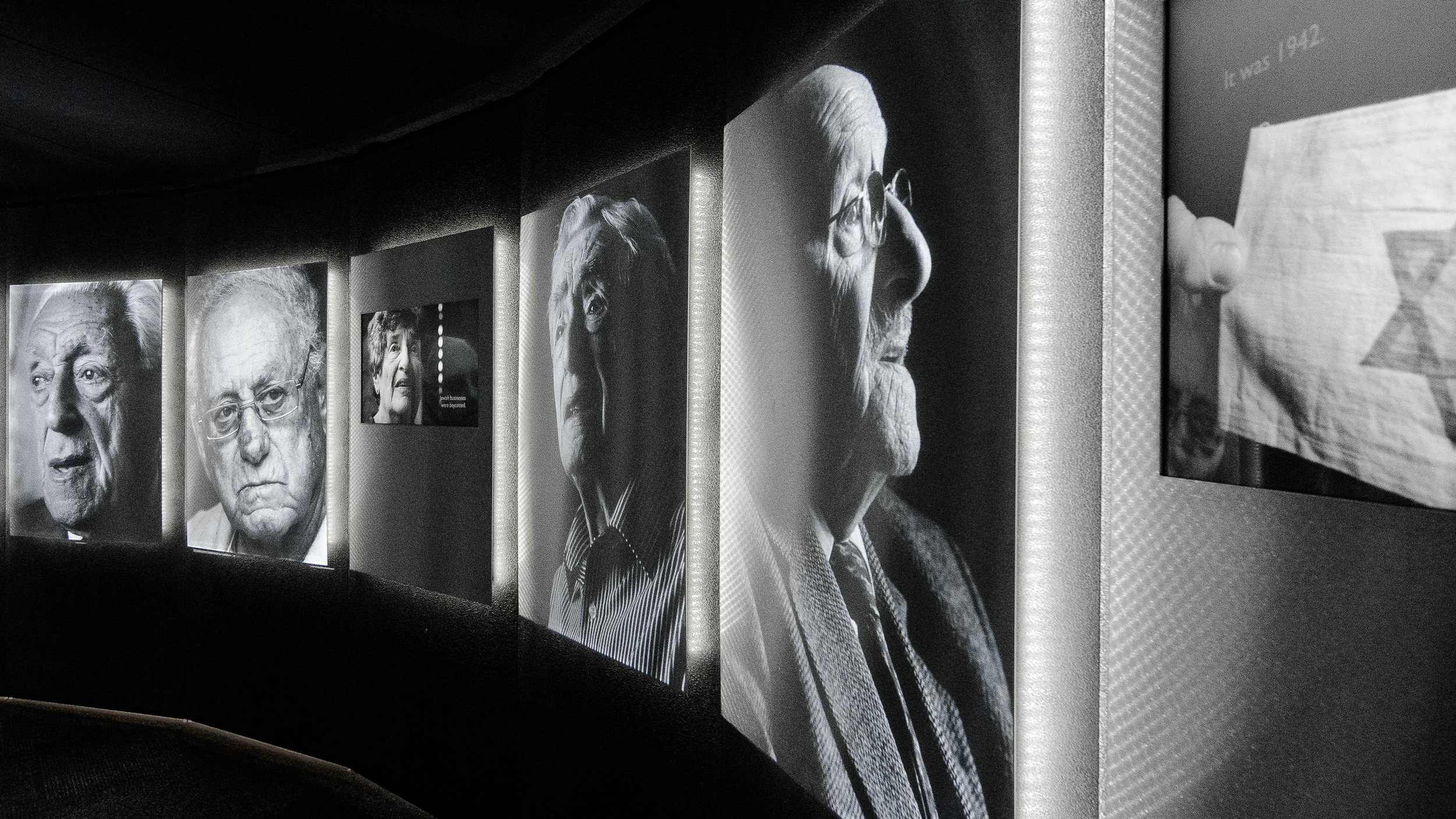
Introduction and Artist Statement
for the “Auschwitz. Now.” exhibition
Auschwitz. In popular culture the term has become an archetypal symbol, a metaphor for ultimate evil. So mind-bending were the actions undertaken at this, the largest mass murder factory in human history, that Auschwitz has become ground zero on the moral landscape.
Through images of Auschwitz and survivor portraits and stories, this exhibition attempts to convey the broader story of which Auschwitz has become a potent symbol.
Europe’s Jewish population in the 1930's numbered some nine million. Poland was at that time home to the world's largest Jewish community. It had been so for centuries. By the time World War II ended in 1945, six million European Jews had been murdered, ninety per cent of Polish Jews were dead. Many had been reduced to ashes by facilities purpose built by Hitler's regime for annihilation.
The systematic murder of Jews on an industrial scale was no historical anomaly. Rather, it was merely the worst manifestation of a hatred that for hundreds of years had simmered and frequently boiled over. Ancient hatred, German efficiency and technology converged with theological, Darwinian and other ideologies, to destroy a people. Europe of the time was considered “Christian” and Germany the pinnacle of culture and education. And yet it spawned such evil.
Large numbers of Roma and Sinti, homosexuals, and other groups were murdered. But it was Jews who were most intensively and intentionally targeted. Industrialised killing on such a scale was only possible because of the cooperation of ordinary Europeans - whether it be active or passive. Many of the Jews' former neighbours became eager accomplices in murder. Few resisted. Those who showed compassion toward the Jews often did so at great personal risk. Amongst the most disturbing of many disturbing facts that emerge from these survivor stories, is that examples of love and courage toward the Jews were so relatively few.
Though the Holocaust is one of the most documented events in all of human history, the phenomena of denial, distortion, and dilution are among many reasons the ongoing work of documentation is important. And yet, for all the work that is done, all the evidence that is gathered, there seems something often neglected. The human face, the pathos of this event, is too quickly passed over. The sheer magnitude of corporate destruction somehow serves to deflect the onlooker's attention from an unfathomable personal toll. When one speaks of a thousand, a million, six million, the personal experience of the individual son or daughter, brother or sister, mother or father, is too readily subsumed in the statistic. The stories included in this exhibition are an an attempt to address that deficit.
I first photographed Holocaust survivors in 2008 when Sheree and I were visiting friends in a Kibbutz. Upon learning that many of the residents had arrived as orphans following the Shoah, we asked to meet. And thus, this work had a beginning.
From interviews typically ninety minutes duration, a mere fifteen to twenty-four lines of text have been distilled. These have been combined with black and white portraits and original music to create three minute stories. The various excerpts of survivor stories, taken as a whole, provide an overview of the events of that dark period.
Because my goal has been to present a well rounded introduction to the events of which Auschwitz has become a symbol, not all the survivors featured in this exhibition experienced Auschwitz. The sagas of survival could not be more varied: from being sheltered in relative comfort, to being constantly on the run, hunted like wild animals, to being cared for amongst Partisans, to posing as a Nazi in the Hitler Youth Movement.
Photography took place during the survivors’ interviews, in every case using only available window light. The earliest of the portraits were shot in 2011, using older equipment. The most recent portraits were shot late 2019. Images from Auschwitz-Birkenau were shot in September 2019.
Perry Trotter









